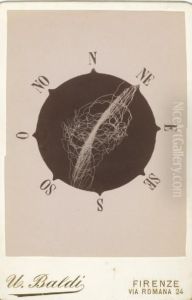Baldi Paintings
Lazzaro Baldi was an Italian painter of the Baroque period, born in 1624 in Pistoia, Tuscany. He was initially a pupil of Giovanni Biliverti in Florence but moved to Rome to further his art education under the guidance of Pietro da Cortona, one of the leading painters of the Roman Baroque. Under Cortona's tutelage, Baldi developed a style that combined the dynamism and grandeur typical of the High Baroque with a certain sensitivity to color and emotion, characteristics that would define his career.
Baldi's works are primarily religious and mythological in subject, with a significant output of frescoes and altarpieces. He was particularly noted for his skill in fresco painting, which he demonstrated in various Roman churches and palaces. Among his most celebrated works are the frescoes in the Palazzo Pamphilj in Piazza Navona and the Basilica of Sant'Andrea della Valle in Rome. These works exhibit Baldi's ability to create dramatic compositions with a rich palette and effective use of light.
Throughout his career, Baldi was also active in other cities, including Pistoia and Perugia, where he left notable works that contributed to the spread of Roman Baroque style across Italy. Despite his contributions, Baldi's work was somewhat overshadowed by his more famous contemporaries and his mentor, Pietro da Cortona. Nevertheless, his paintings and frescoes reflect the vitality and emotional depth of the Baroque movement, making him a significant, if underappreciated, figure in 17th-century Italian art.
Lazzaro Baldi's career was marked not only by his artistic output but also by his involvement in the artistic community of Rome. He was part of the Accademia di San Luca, the prestigious guild of artists in the city, where he played an active role in the promotion and development of the arts in Rome. Baldi died in 1703, leaving behind a legacy that, while not as widely recognized as some of his peers, represents an important link in the evolution of Baroque art in Italy.
